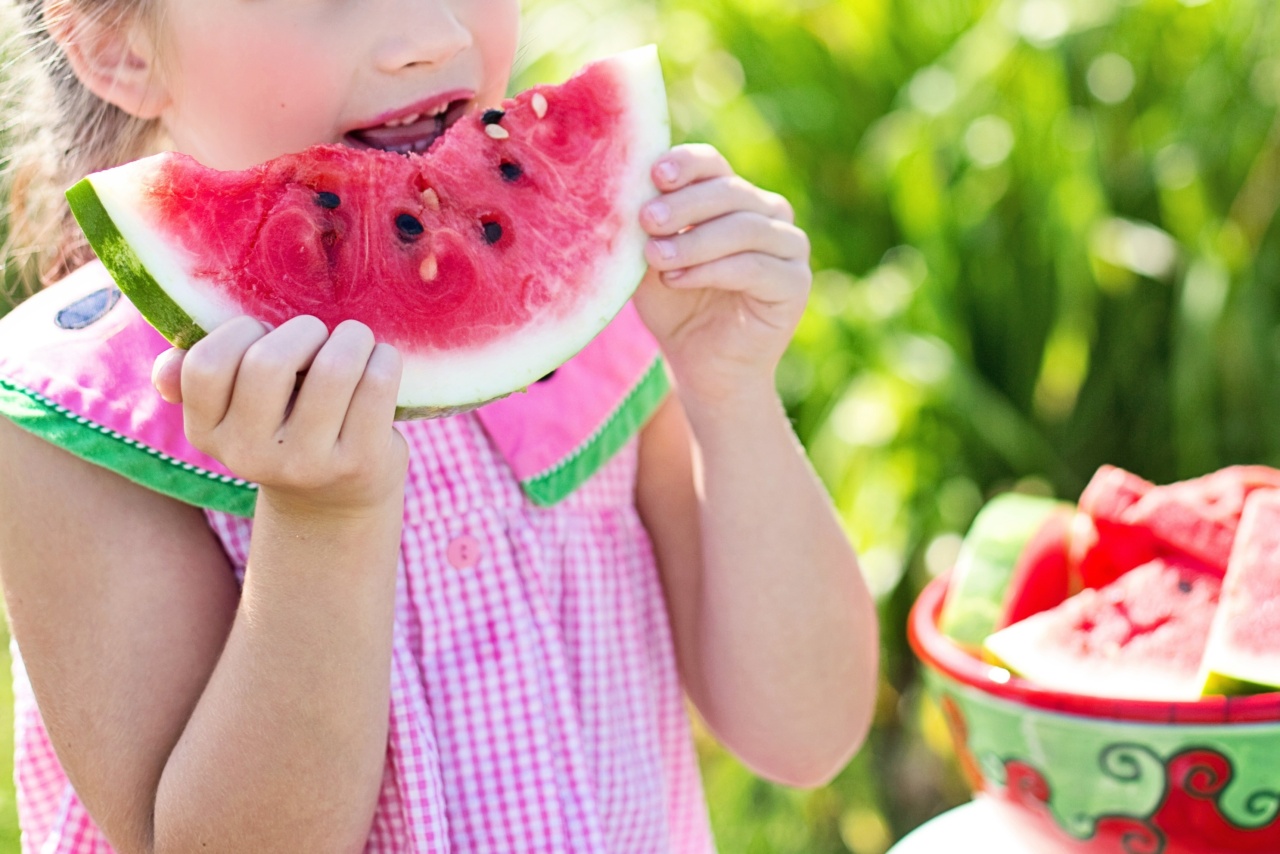Eating healthy is important for people of all ages, but it is especially crucial for children. As parents, it is our responsibility to ensure that our kids are consuming nutritious foods that will support their growth and development.
However, with the countless options available in supermarkets and the increasing influence of junk food advertisements, it can be challenging to make the right choices.
Foods to Avoid
While it is important to focus on incorporating healthy foods into your child’s diet, it is equally essential to be aware of the foods that should be limited or avoided altogether. Here are some foods that you should be cautious about:.
1. Sugary Beverages
Sugary drinks like soda, fruit juice, and sports drinks are packed with added sugars and have little nutritional value. These beverages contribute to weight gain, dental problems, and an increased risk of developing chronic diseases such as diabetes.
Encourage your child to drink water, milk, or 100% fruit juice in limited quantities.
2. Processed Snacks
Snack foods such as potato chips, cookies, and candy bars are loaded with unhealthy fats, sugar, and sodium. These empty calories can lead to weight gain and an imbalance in nutrient intake.
Opt for healthier snack alternatives like fresh fruits, vegetables, yogurt, or homemade trail mixes.
3. Fast Food and Fried Foods
Fast food products and fried foods are packed with unhealthy fats, excessive sodium, and added sugars. Regular consumption of these foods can lead to obesity, high blood pressure, and other health problems.
Prepare homemade meals using fresh ingredients whenever possible to ensure a balanced and nutritious diet.
4. High-Sugar Cereals
Many breakfast cereals marketed to children are loaded with sugar and lack essential nutrients. These cereals can contribute to a rapid increase in blood sugar levels and may leave your child feeling hungry shortly after eating.
Look for whole grain cereals with low sugar content or opt for homemade smoothies or oatmeal.
5. Processed Meats
Processed meats like hot dogs, sausages, and deli meats are high in sodium and unhealthy additives. Regular consumption of these meats has been linked to an increased risk of cancer, heart disease, and other health issues.
Opt for lean cuts of fresh meat or poultry to provide essential proteins for your child’s growth.
6. Foods with Artificial Colors and Flavors
Many processed foods aimed at children are artificially colored and flavored. These additives have been linked to behavioral problems and allergic reactions in some individuals.
Read labels carefully and choose foods that are free from artificial colors and flavors.
7. High-Sodium Foods
Foods with high sodium content, such as processed snacks, canned soups, and fast food items, can lead to high blood pressure and other health complications.
Be mindful of the sodium levels in the foods you choose and opt for lower sodium alternatives when possible.
8. Trans Fats
Trans fats are found in many commercially baked goods and fried foods. They raise bad cholesterol levels and lower good cholesterol, increasing the risk of heart disease.
Check food labels for trans fats and try to avoid products containing partially hydrogenated oils or fats.
9. Excessive Fruit Juice
While fruit juice can be a part of a healthy diet, excessive consumption can lead to an overconsumption of sugar and calories.
Limit your child’s fruit juice intake to no more than 4-6 ounces per day and prioritize whole fruits for fiber and additional nutrients.
10. Energy Drinks
Energy drinks contain high levels of caffeine, added sugars, and other stimulants. These beverages can cause irregular heart rhythms, high blood pressure, obesity, and even addiction.
Encourage your child to drink water or herbal tea instead to stay hydrated.
Conclusion
Teaching children healthy eating habits is essential for their long-term well-being.
By avoiding or limiting the consumption of sugary beverages, processed snacks, fast food, and other unhealthy food choices, you can help your child develop a balanced and nutritious diet. Encourage them to eat a variety of fruits, vegetables, whole grains, and lean proteins while practicing moderation with indulgent treats. By instilling healthy eating habits early on, you are laying the foundation for a lifetime of good health.





























